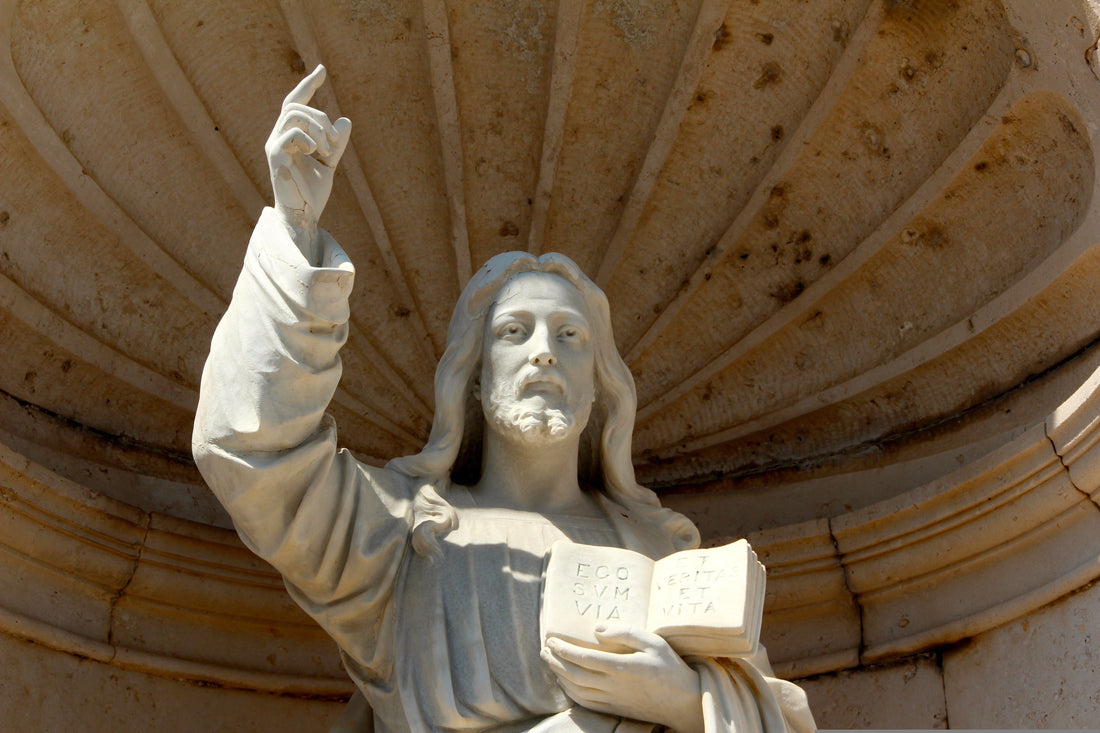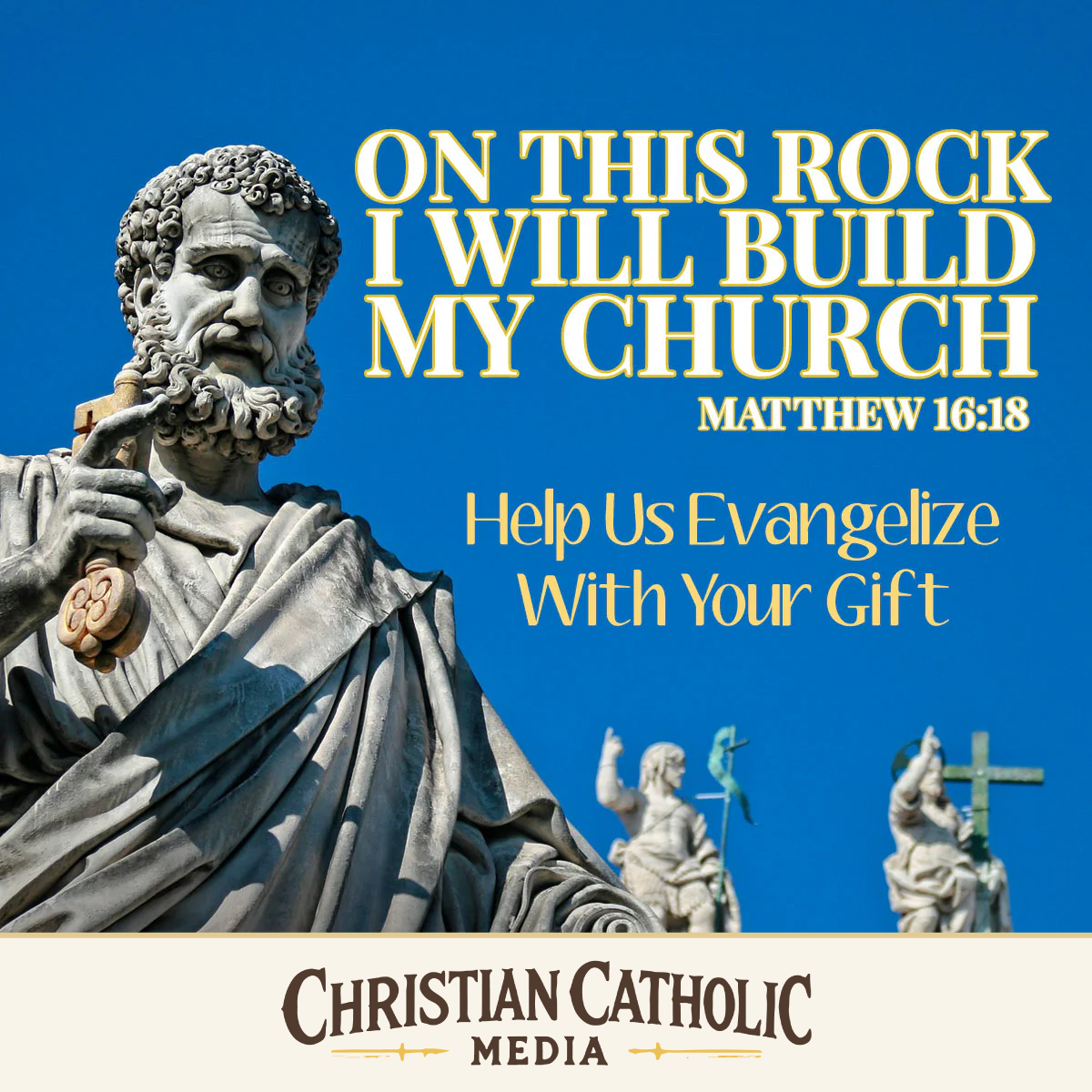
Church History: The Catholic Church from Christ to Today
If you're exploring the Catholic faith, you may be wondering: Is this really the Church Jesus started? Can a Church with scandals and sinners truly be guided by God? Why are there so many Christian denominations — and how do we know which one has the truth?
The answer lies in history — and in Christ’s promise. The Catholic Church is not just a branch of Christianity. She is Christianity in its original and fullest form: the one Church founded by Jesus, protected by the Holy Spirit, and still standing after 2,000 years.
Let’s walk through that story — with clarity, honesty, and faith.
1. Jesus Founded One Church — Not Many (c. 30 A.D.)
Jesus Christ established a visible, hierarchical, sacramental Church, giving authority to the Apostles — especially Peter:
“You are Peter, and on this rock I will build My Church, and the gates of hell shall not prevail against it.” (Matthew 16:18)1
“Whatever you bind on earth shall be bound in heaven...” (Matthew 18:18; see also John 20:21–23)
The early Church was unified under the leadership of the Apostles and centered on the Eucharist, baptism, and teaching (Acts 2:42). The early Christians did not rely on the Bible alone (which had not yet been compiled), but on Sacred Tradition and apostolic authority2.
2. The Early Church: United, Sacramental, and Persecuted (1st–3rd Centuries)
Under the Roman Empire, Christians faced martyrdom, yet the Church grew. Early Christian writings reveal that the Church was already called “Catholic” by the early 2nd century:
“Wherever the bishop appears, there let the people be; just as wherever Jesus Christ is, there is the Catholic Church.” — St. Ignatius of Antioch, c. 107 A.D.3
The early Church believed in:
- The Real Presence in the Eucharist4
- Confession to priests (see James 5:16; John 20:23)
- Bishops in apostolic succession (see Acts 1:20–26; 2 Tim 2:2)
This is Catholicism, plain and simple.
3. Defining Doctrine, Defending Truth (4th–5th Centuries)
With the Edict of Milan (313 A.D.), Christianity was legalized, and the Church entered a new era. She soon faced internal theological attacks — especially Arianism, which denied the full divinity of Christ. The Church responded in ecumenical councils, guided by the Holy Spirit.
- The Council of Nicaea (325 A.D.) affirmed Christ as “God from God, Light from Light, true God from true God”5.
- The Council of Carthage (397 A.D.) confirmed the canon of the Bible as we know it today6.
The Catholic Church gave us the Bible, through her authority. Nowhere does Scripture claim to be the sole rule of faith (sola scriptura) — that idea arose over 1,400 years later.
4. The Church in the Middle Ages: Faith and Struggle (6th–15th Centuries)
After the fall of Rome, monasteries preserved knowledge, evangelized pagan tribes, and upheld Catholic worship. The Church also organized education, hospitals, and social charity across Europe.
But not all was glorious. The Church suffered from corruption, political entanglements, and moral failure — especially in some of her leaders. Still, she never changed her doctrine on faith or morals.
In 1054, the Great Schism divided East and West — mostly over papal primacy and the filioque clause. Yet the Church in Rome retained the fullness of apostolic authority and unity7.
5. The Protestant Reformation: Division, Not Reform (16th Century)
Martin Luther began with valid concerns about Church abuses — but soon rejected the authority of the Church entirely, along with several sacraments, the papacy, and centuries of apostolic teaching.
What the Reformers rejected:
- Papal authority (despite Matthew 16:18–19)
- Seven sacraments, especially the Eucharist and confession
- Sacred Tradition and the Magisterium
- Free will and cooperation with grace (see Philippians 2:12; James 2:24)
“You see that a person is justified by works and not by faith alone.” — James 2:24
Sola scriptura and sola fide are not biblical doctrines. They are human traditions that caused the fragmentation of Christianity into thousands of competing denominations8.
The Church’s response — the Council of Trent (1545–1563) — clarified doctrine, reformed clergy training, and reaffirmed the truth of the Catholic faith. True reform came from within, led by holy saints:
- St. Teresa of Ávila
- St. Ignatius of Loyola
- St. Charles Borromeo
- St. Francis de Sales
6. The Church in the Modern World (17th–21st Centuries)
The Church has endured revolutions, wars, and waves of secularism, but her mission continues:
- First Vatican Council (1870) defined papal infallibility9.
- 20th-century saints like St. Maximilian Kolbe and St. John Paul II opposed totalitarian regimes with Gospel truth.
- The Second Vatican Council (1962–1965) emphasized evangelization, the universal call to holiness, and liturgical renewal — not to change doctrine, but to deepen the faithful’s participation in the life of the Church10.
The Church remains the only Christian body that has preserved the same apostolic structure, sacraments, and doctrine since the first century.
Why This Matters
Christ did not found many churches. He founded one Church — the Catholic Church — and entrusted her with Scripture, Tradition, the sacraments, and the fullness of truth.
“The Church... is the pillar and foundation of truth.” — 1 Timothy 3:15
Despite human failings, the Church has never taught heresy in her official doctrine. That’s not because her members are perfect — it’s because Christ keeps His promises (John 14:26, Matthew 28:20).
Conclusion: Come Home
If you’re entering the Catholic Church, you’re not just joining a religion. You’re returning to the Church founded by Jesus, sustained by grace, and called to bring truth and salvation to the world.
“Outside the Church there is no salvation because salvation is the Church.” — St. Cyprian of Carthage11
This Church has survived empires, revolutions, heresies, and scandals. She’s still here — offering the same Eucharist, preaching the same Gospel, and calling you into a life of grace and truth.
Welcome home.
Footnotes
- Matthew 16:18 – Jesus gives Peter the keys, a symbol of authority (see Isaiah 22:22). ↩
- 2 Thessalonians 2:15; 1 Corinthians 11:2 — Paul commands believers to hold fast to oral and written traditions. ↩
- Letter to the Smyrnaeans, St. Ignatius of Antioch, c. 107 A.D. ↩
- The First Apology, St. Justin Martyr, c. 155 A.D.: “We do not receive these as common bread and drink, but... the flesh and blood of Jesus.” ↩
- The Nicene Creed, Council of Nicaea, 325 A.D. ↩
- Council of Carthage (397 A.D.) — affirmed canon including 73 books of Scripture, matching the modern Catholic Bible. ↩
- Catechism of the Catholic Church (CCC), §834–838 – on unity and schism. ↩
- There are over 30,000 Protestant denominations worldwide — a consequence of sola scriptura. ↩
- Pastor Aeternus, First Vatican Council, 1870. ↩
- Lumen Gentium and Sacrosanctum Concilium, Vatican II documents. ↩
- On the Unity of the Church, St. Cyprian of Carthage, c. 251 A.D. ↩








